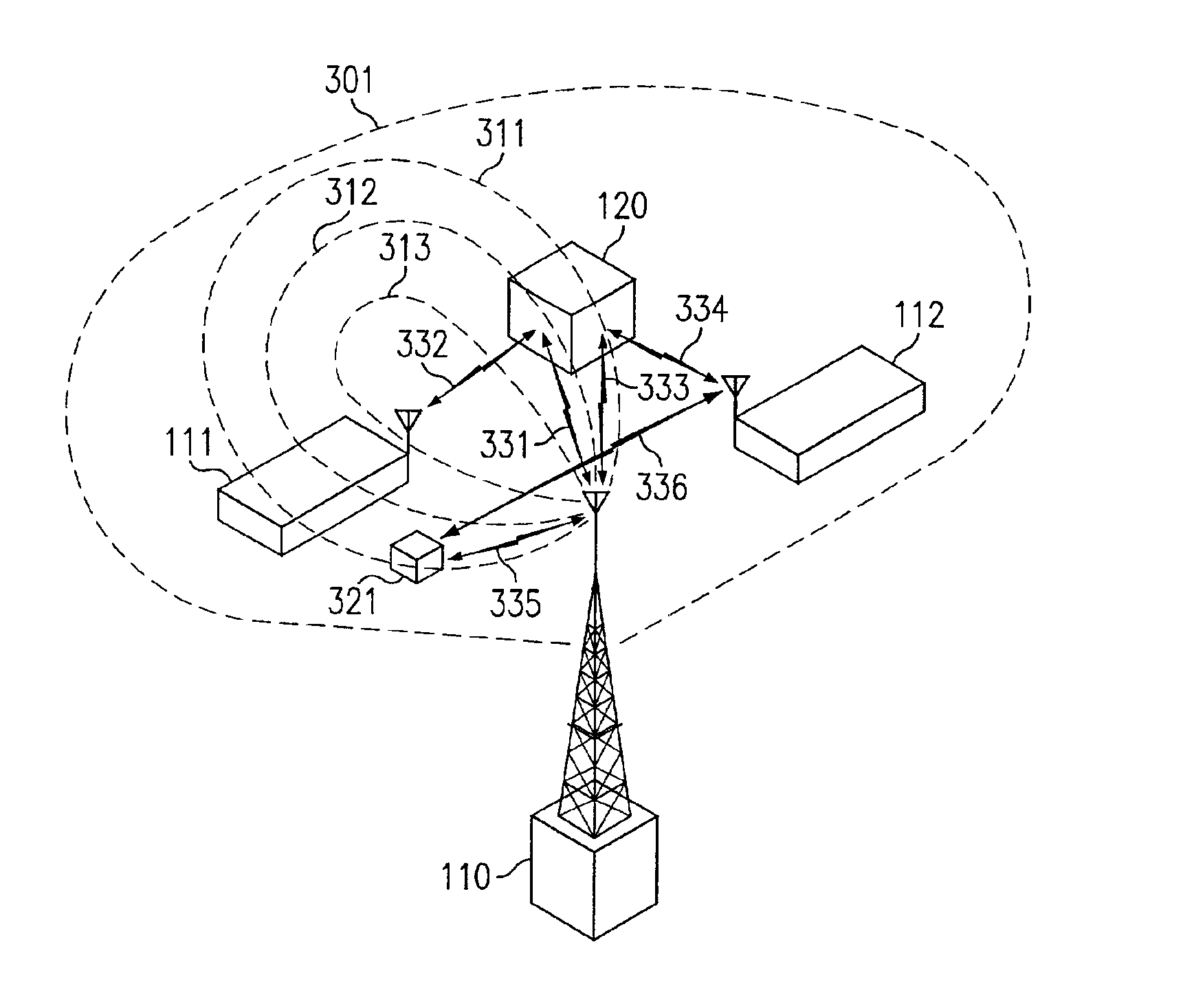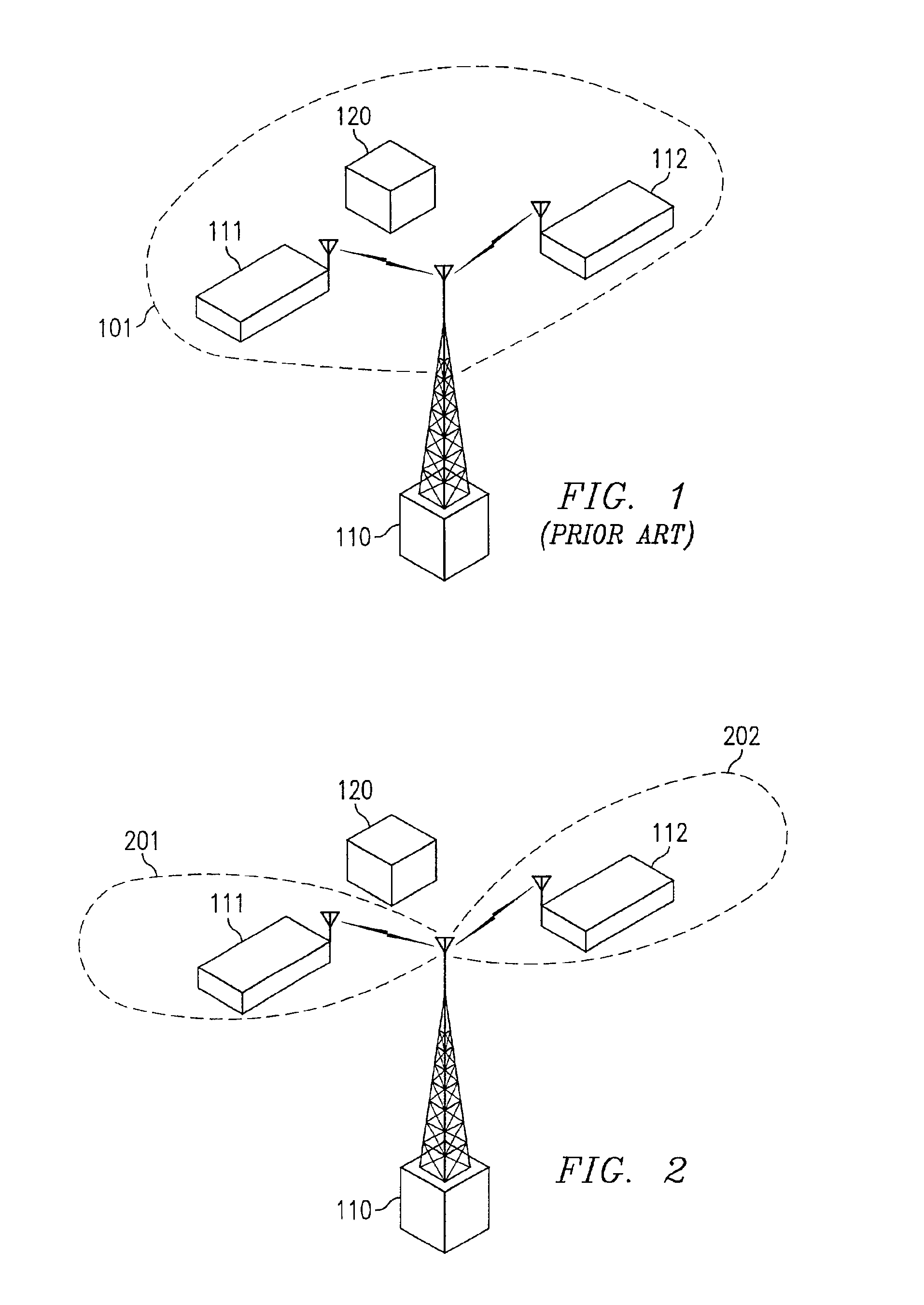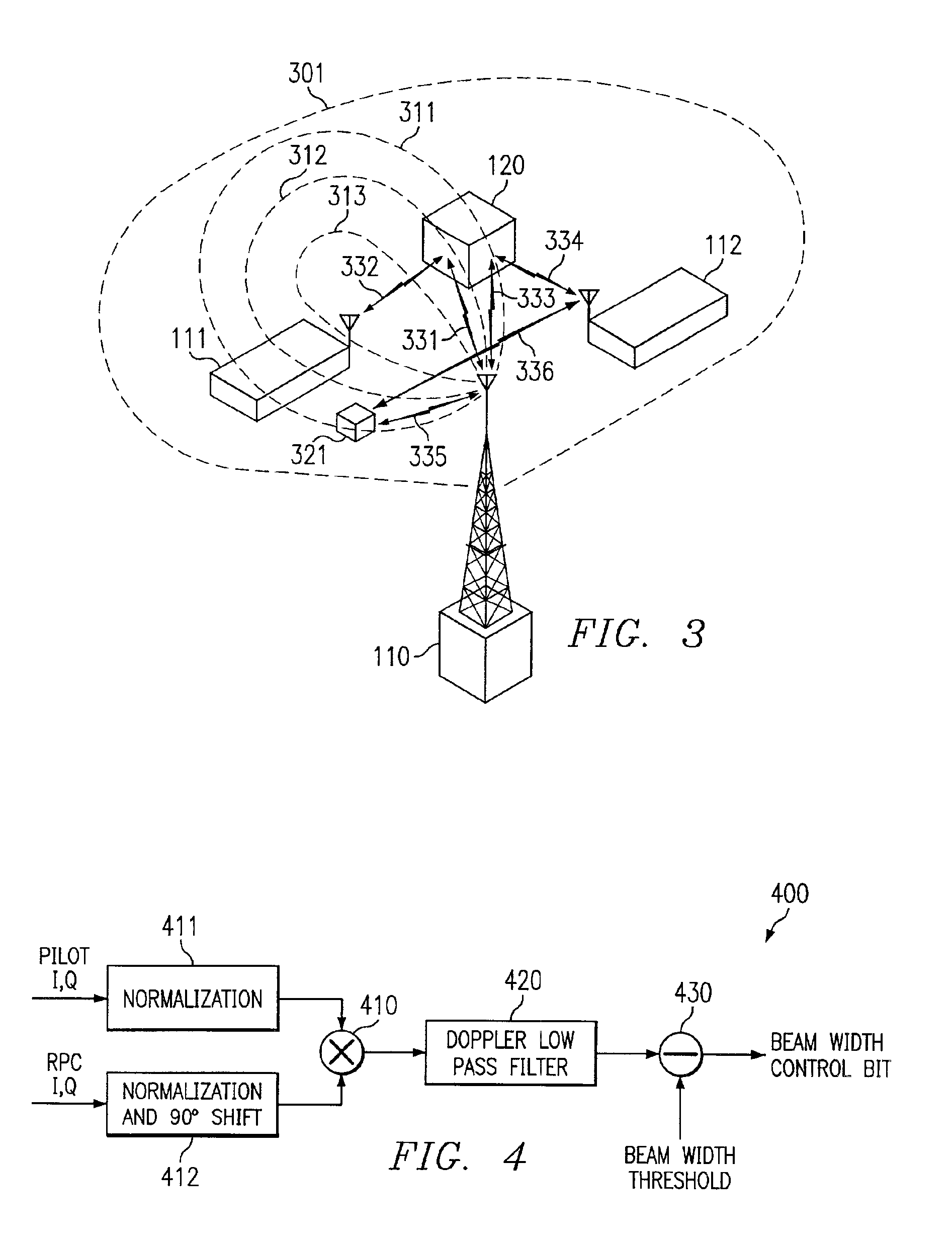Space division multiple access strategy for data service
a data service and space division technology, applied in the field of wireless communication, can solve the problems of insufficient capacity, insufficient spatial segregation, and insufficient capacity for maximum increased capacity
- Summary
- Abstract
- Description
- Claims
- Application Information
AI Technical Summary
Benefits of technology
Problems solved by technology
Method used
Image
Examples
Embodiment Construction
[0027]Directing attention to FIG. 1, a wireless system in which multiple subscriber stations are in communication with a wireless access point is shown. Specifically, data terminals 111 and 112, such as may be cellular wireless handsets, are shown to be in wireless communication with access point 110, such as may be a cellular Base Transceiver Station (BTS). Preferably access point 110 is coupled to a network (not shown), such as a cellular telephony network, a personal communications services network, or even the Internet, and provides information communication between the network and various subscriber stations, such as data terminals 111 and 112. In providing communication to multiple subscriber stations, access point 110 may illuminate an area associated with the multiple subscriber stations, such as a cell or a sector of a cell, with a radiated signal, such as that of sector beam 101 of FIG. 1.
[0028]However, the use of such a broadcast approach to communications results in exce...
PUM
 Login to View More
Login to View More Abstract
Description
Claims
Application Information
 Login to View More
Login to View More - R&D
- Intellectual Property
- Life Sciences
- Materials
- Tech Scout
- Unparalleled Data Quality
- Higher Quality Content
- 60% Fewer Hallucinations
Browse by: Latest US Patents, China's latest patents, Technical Efficacy Thesaurus, Application Domain, Technology Topic, Popular Technical Reports.
© 2025 PatSnap. All rights reserved.Legal|Privacy policy|Modern Slavery Act Transparency Statement|Sitemap|About US| Contact US: help@patsnap.com



